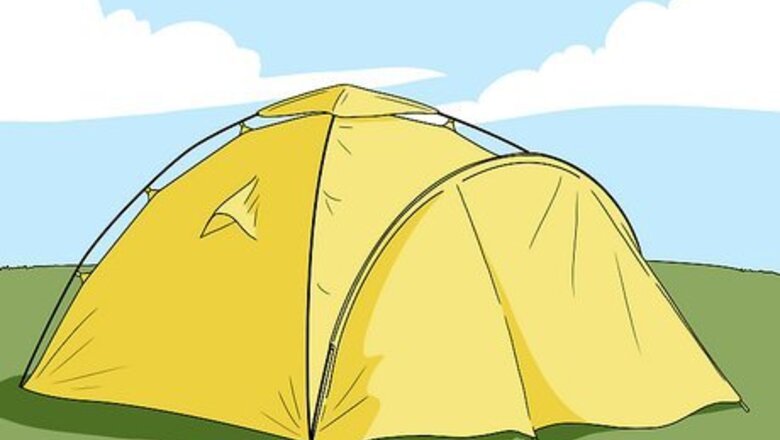
views
Selecting a Type of Tent
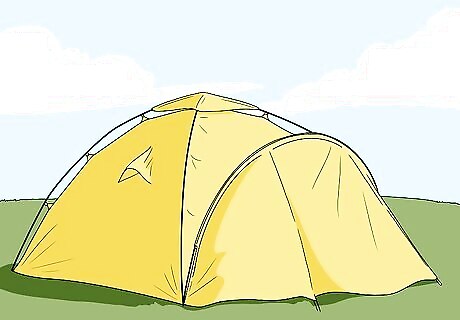
Go for a three-season tent for versatility. When in doubt, the three-season tent is a good choice. It fits most basic camping needs and is equipped to handle the weather in the spring, summer, and fall. This type of tent is relatively lightweight, provides good ventilation in the summer heat, and includes a roof canopy that successfully keeps out rain.
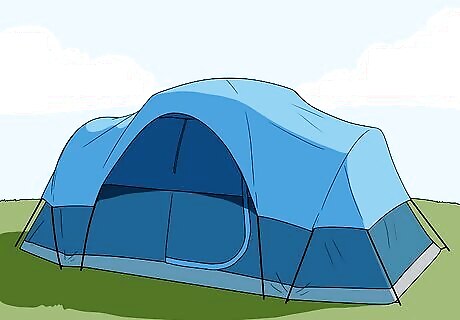
Get a family tent if you drive to campsites. While family tents tend to be quite a bit heavier, they also have tall walls and sometimes even multiple rooms that provide a lot of space and comfort. This type is a great choice if you usually go car camping, which means driving to the site instead of walking. It’s also a good option if you camp with multiple people at a time.
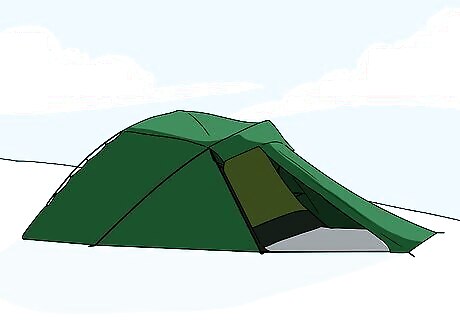
Buy a four-season tent if you camp in the cold. While they’re called four-season tents, this type is made specifically for winter weather. You can close off all ventilation in these tents, and they’re typically made of strong materials that can handle extreme wind and snow. This might be the best choice if you often camp in cold, snowy places.
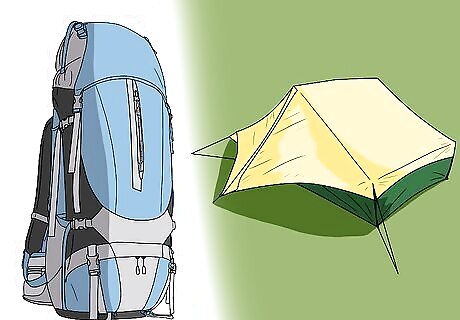
Get a backpacking tent for long treks. These are often only constructed to shelter one person, and prioritize weight and packability over size. If you often go on long backpacking trips, look for a backpacking tent that weighs about two pounds.
Choosing a Size and Shape
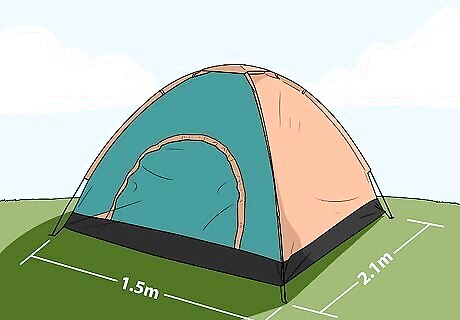
Make sure there’s 30 square feet (2.8 square meters) of space per person. Think about how many people you camp with, how long you usually camp for, and what you’ll need to do in the tent. It’s recommended that the tent you choose provides at least 30 square feet of space for each person in the tent. A 5x7 foot tent (1.5m x 2.1m) may technically be large enough for two adults to sleep in, but a 10x10 foot ( 3.1m x 3.1m) tent would allow for room to change, store clothes, and even add cots or an air mattress. EXPERT TIP Britt Edelen Britt Edelen BA in English Literature, Brown University Britt Edelen comes to wikiHow after graduating in 2019 from Brown University, where he studied English and German literature and philosophy. While at Brown he contributed frequently to campus publications and worked in the university’s Writing Center. More recently, he has had several articles published in various journals devoted to literary criticism. During his time at wikiHow, Britt supervised and collaborated with writers and editors to continue producing high-quality content and promote wikiHow’s mission of enabling everyone to learn anything. Britt Edelen Britt Edelen BA in English Literature, Brown University Our Expert Agrees: Get a tent that has room for one more person than you need. It's tempting to just get the smallest tent you can, especially if you like to go hiking by yourself. However, if you're outdoors and it's cold, you're going to want to keep all of your stuff inside the tent, so you'll be really glad for the extra space.
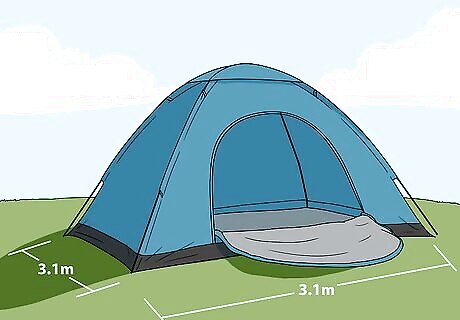
Don’t go too big. Tents that are a lot larger than 10x10 feet ( 3.1m x 3.1m) can be awkwardly shaped and too heavy to carry far distances. It can also be difficult to find a large enough level space to set these tents up on.
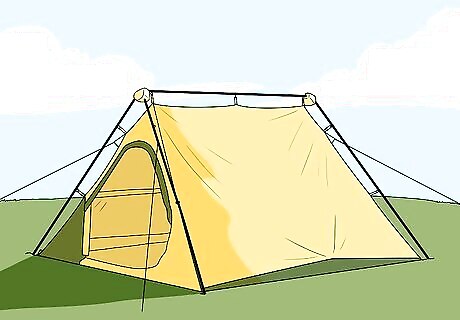
Get a simple A-frame to save money. A-frame tents have the most common shape and are desirable because they’re less expensive and lightweight. The only major downside to this shape is that the sloping side walls tend to limit space. This shape doesn’t do well in harsh weather conditions because the sidewalls can be easily battered by extreme winds. There are also modified A-frame tents that have the basic shape of the A-frame, but have undergone slight adjustments in order to increase interior space.
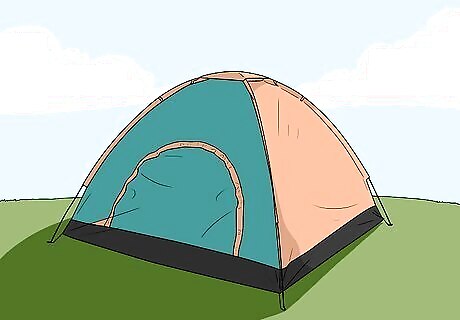
Go for a dome shape if you want headroom. Dome-shaped tents are stabilized by flexible poles that cross over the top of the tent. Because of their structure, they provide a good amount of headroom. Bigger dome tents are less stable, so consider going with a different shape if you intend on having several people sleep in your tent.
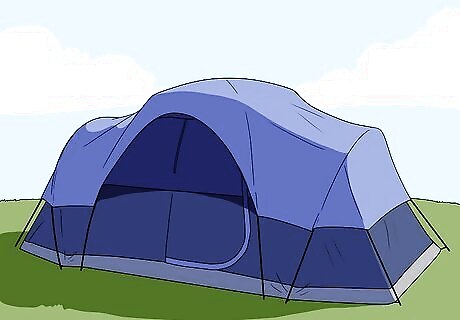
Buy a geodesic tent for good stability. Geodesic tents are similar to dome tents in that their poles crisscross, but different in that these crossed poles create triangles. This is a good shape choice for you if you camp a lot in the winter because it’s very stable.
Including the Best Features

Go with the umbrella shape if you want standing room. The umbrella shape is a great choice for larger groups because of its big windows and tall walls, which make it feel very spacious.
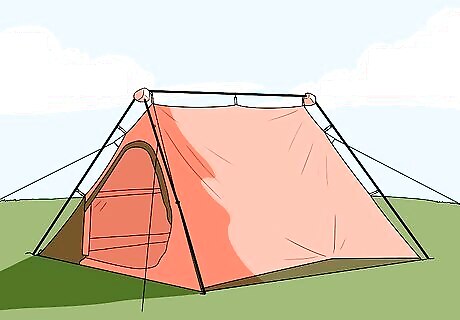
Choose a tent that’s easy to set up. At the end of a long, hard work week or an exhausting day of hiking, the last thing you’ll want to do is take a lot of time to set up shelter. You’ll be especially grateful for a tent that can be set up quickly when the rain starts pouring or the sun starts setting. Look for words and phrases such as “pop-up, “easy up,” “instant,” and “quick-opening” in the tent’s name and description.
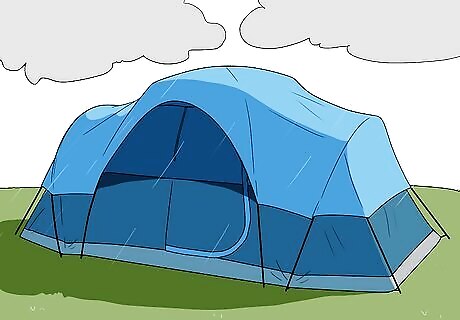
Make sure the tent provides adequate weather protection. Whether you only camp in the hot summer or you camp every month of the year, you’ll need a tent that can provide the right weather protection. The kind of protection you need depends greatly on the climate of the areas you camp in, but rain is one form of weather that nearly every camper needs protection from. Make sure that your tent has a full-coverage rainfly. Tub flooring prevents rain from entering the tent because one large seamless piece of material covers the entirety of the tent floor. While it may seem like a thrifty option at the time, buying a cheap tent can lead to rainwater getting into the tent and ruining your valuables. EXPERT TIP Britt Edelen Britt Edelen BA in English Literature, Brown University Britt Edelen comes to wikiHow after graduating in 2019 from Brown University, where he studied English and German literature and philosophy. While at Brown he contributed frequently to campus publications and worked in the university’s Writing Center. More recently, he has had several articles published in various journals devoted to literary criticism. During his time at wikiHow, Britt supervised and collaborated with writers and editors to continue producing high-quality content and promote wikiHow’s mission of enabling everyone to learn anything. Britt Edelen Britt Edelen BA in English Literature, Brown University Choose a lightweight, durable material for your tent. You need a tent that's completely waterproof, windproof, and fire retardant. However, it still has to be lightweight, because you have to carry it. Most of the time, this will be a synthetic material like nylon.
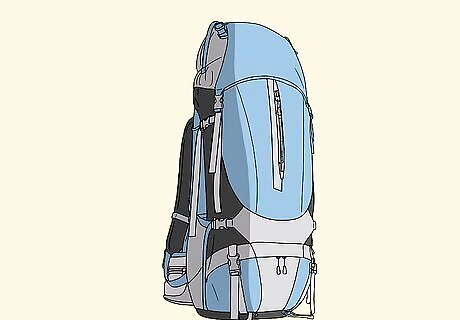
Prioritize weight and packability for backpacking. Especially if you’re planning on hiking a far distance while carrying your tent, you’ll need one that’s as lightweight as possible and that’s easily compactable. The lighter the material, the more expensive the tent.
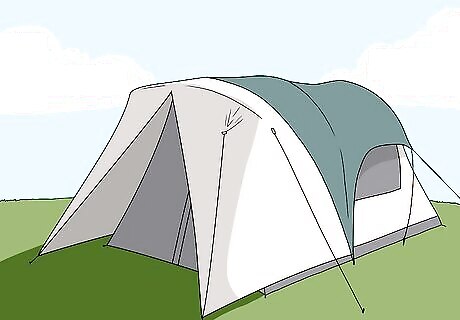
Maximize storage with vestibules. If you’ve got a lot of supplies, clothing, etc., getting a tent with at least one vestibule can really expand your storage space. These can be located at the front/rear of the tent or on one of the sides. They also make getting in and out of the tent a much smoother process. A square-shaped floor can also help maximize storage possibilities.
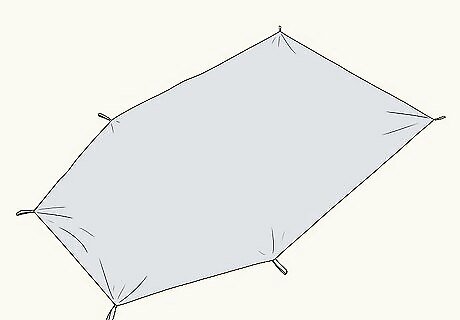
Be sure to buy a footprint to go with your tent. A footprint is a cloth that goes underneath your tent. This will not only protect the tent floor from rocks and debris, but can also prevent ground condensation inside the tent from forming if you pitch your tent on a cold, damp site. Many tents are available with a matching footprint that can be snapped or clipped to the bottom of the tent.
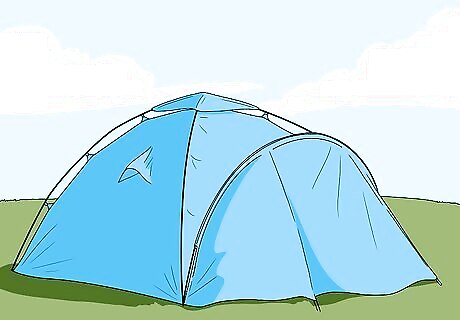
Weigh the pros and cons of single or double walls. Most tents either fall under the category of single-wall or double-wall. There are good aspects and not-so-good aspects of each one, so consider both to see which one is worth it for you. Single-wall tents are lighter and easier to set up but provide less protection and storage space. Double-wall tents provide more space and protection but are significantly heavier.
Looking for Quality Materials

Buy a tent made of tightly woven, rip-resistant material. Good tents are made from high-quality materials that are strong, lightweight, and water-resistant. The best quality tents are typically made of nylon, polyester, cotton canvas, or polycotton. Stay away from fabrics that feel thinner.
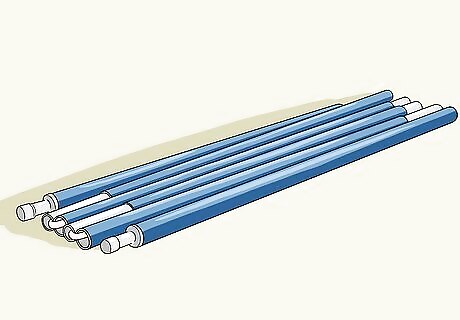
Choose aluminum tent poles. Tent poles can be made of many different materials, including carbon composite or fiberglass. Aluminum poles are the strongest and most durable option, so go for a tent that has them. The downside to getting aluminum poles is that they’re a bit heavier.

Get a tent with durable zippers. Before buying a tent, take a good look at the zippers on the doors and windows. If they look like the zippers on your pants, they’re likely going to bind or break at some point. Strong zippers are crucial because they’re as big a part of protecting you as the fabric and seams of your tent. Double zippers are a good indication of quality.
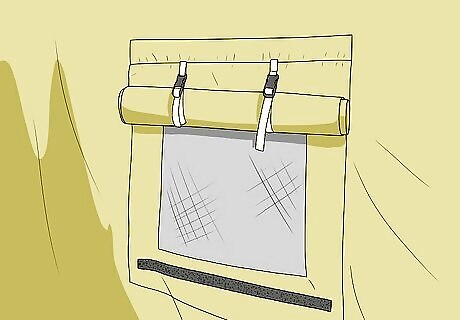
Ensure ventilation with mesh paneling. Especially in the summer, it’s no fun to be trapped in a stuffy enclosed tent with too much body heat and not enough fresh air. Get a tent that has mesh panels on the ceiling, doors, and/or windows to ensure good airflow and prevent condensation.











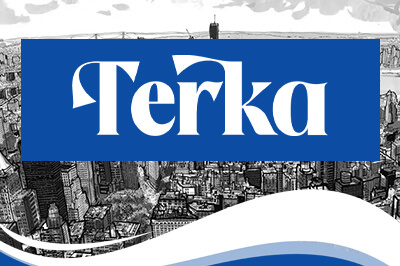



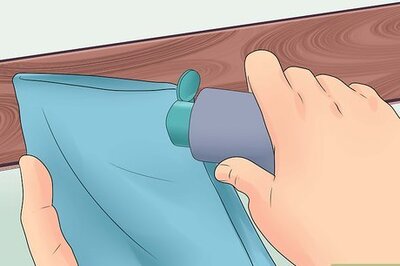
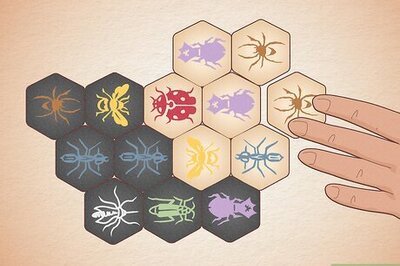

Comments
0 comment